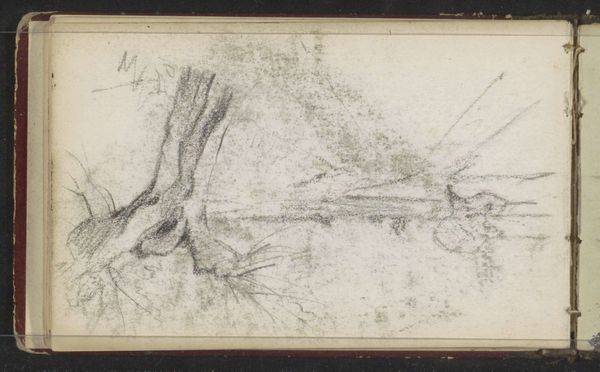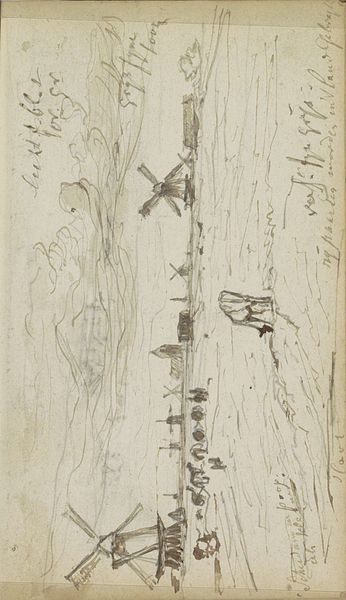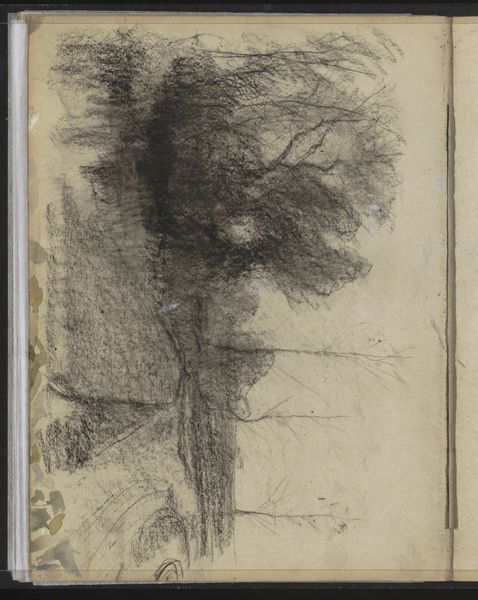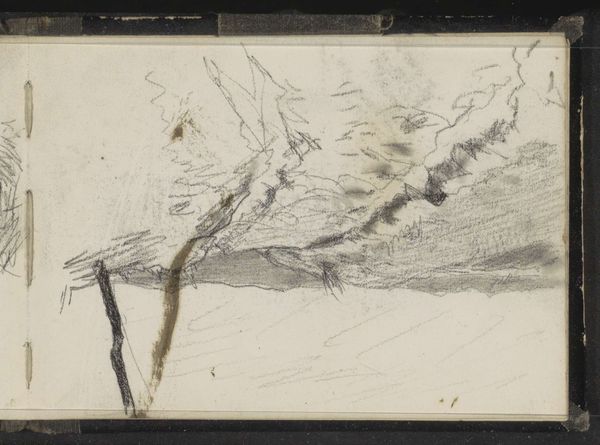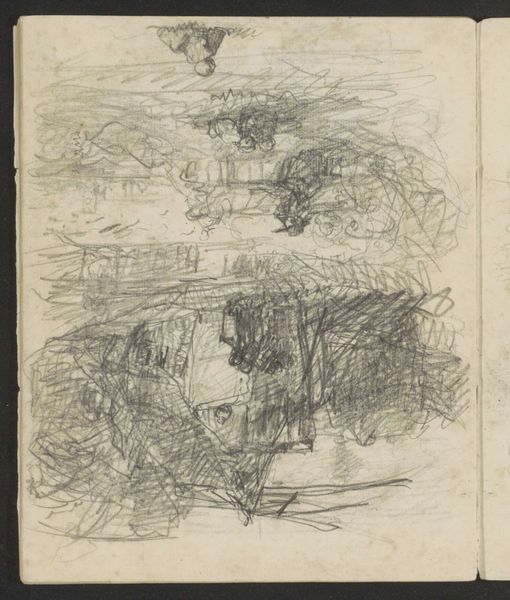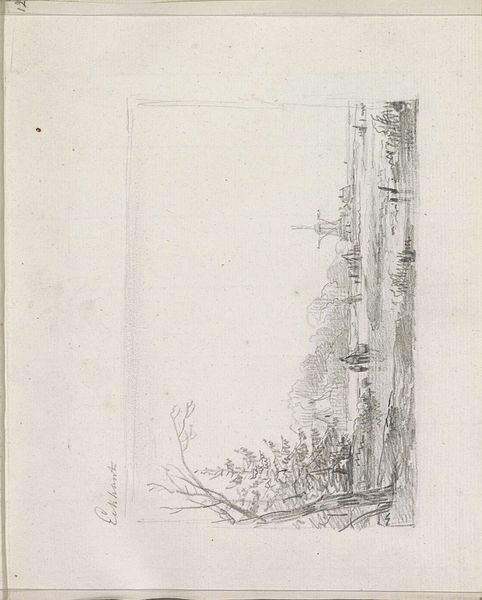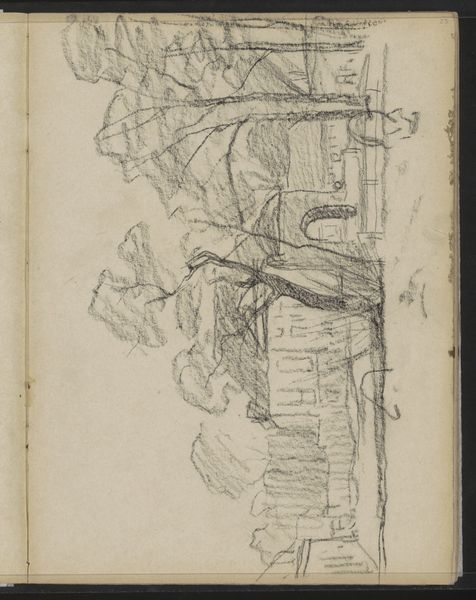
Copyright: Rijks Museum: Open Domain
Curator: Take a look at this sketchbook page, Knotwilgen langs een rivier, which translates to Pollard Willows Along a River, created by Johannes Tavenraat sometime between 1862 and 1864. Editor: Ah, instantly evocative, wouldn’t you say? Those tangled branches reach across the page like…reaching fingers. It feels wintry, stark, and a little melancholy. Curator: It’s currently held at the Rijksmuseum. It seems the artist primarily used ink and pencil to build up a relatively complex drawing of what is essentially a roadside view. You can almost feel the quality of labor invested in the detail of line work. Editor: Detail, yes, but there's a wonderful looseness too. It’s less about photographic accuracy and more about capturing the feeling of a place. That river bending in the distance...almost makes you want to sigh, doesn’t it? Curator: Indeed. Considering the means, the relative low cost of paper and ink at the time, it presents us with questions regarding who it was made for, what function it served for the artist in his daily practice, how its value shifts through time... Editor: Value...but isn't there a certain, dare I say, raw beauty in its incompleteness? I picture the artist stopping there, perhaps sketching quickly before the light changed entirely, or the wind picked up. It holds a captured moment. Curator: Perhaps, though, that incompletion also hints at certain modes of artistic production and circulation, which is crucial. Did Tavenraat perhaps intended to sell studies like these, which informed his painting output, or gift them? The lines here complicate simple categories like "finished product". Editor: That's insightful. Still, it makes you wonder about the person who held this sketchbook, doesn't it? Where were they going? What were they thinking? There’s a quiet story here waiting to be unfolded, as silent and stoic as those willow trees. Curator: Absolutely, and considering materiality helps to situate the conditions for artistic innovation, to recognize a range of processes, from resource extraction and material flows to manual skills, and to rethink the historical discourse about art. Editor: So well put! Thinking of it that way opens so many more perspectives on a piece I thought I already understood.
Comments
No comments
Be the first to comment and join the conversation on the ultimate creative platform.

